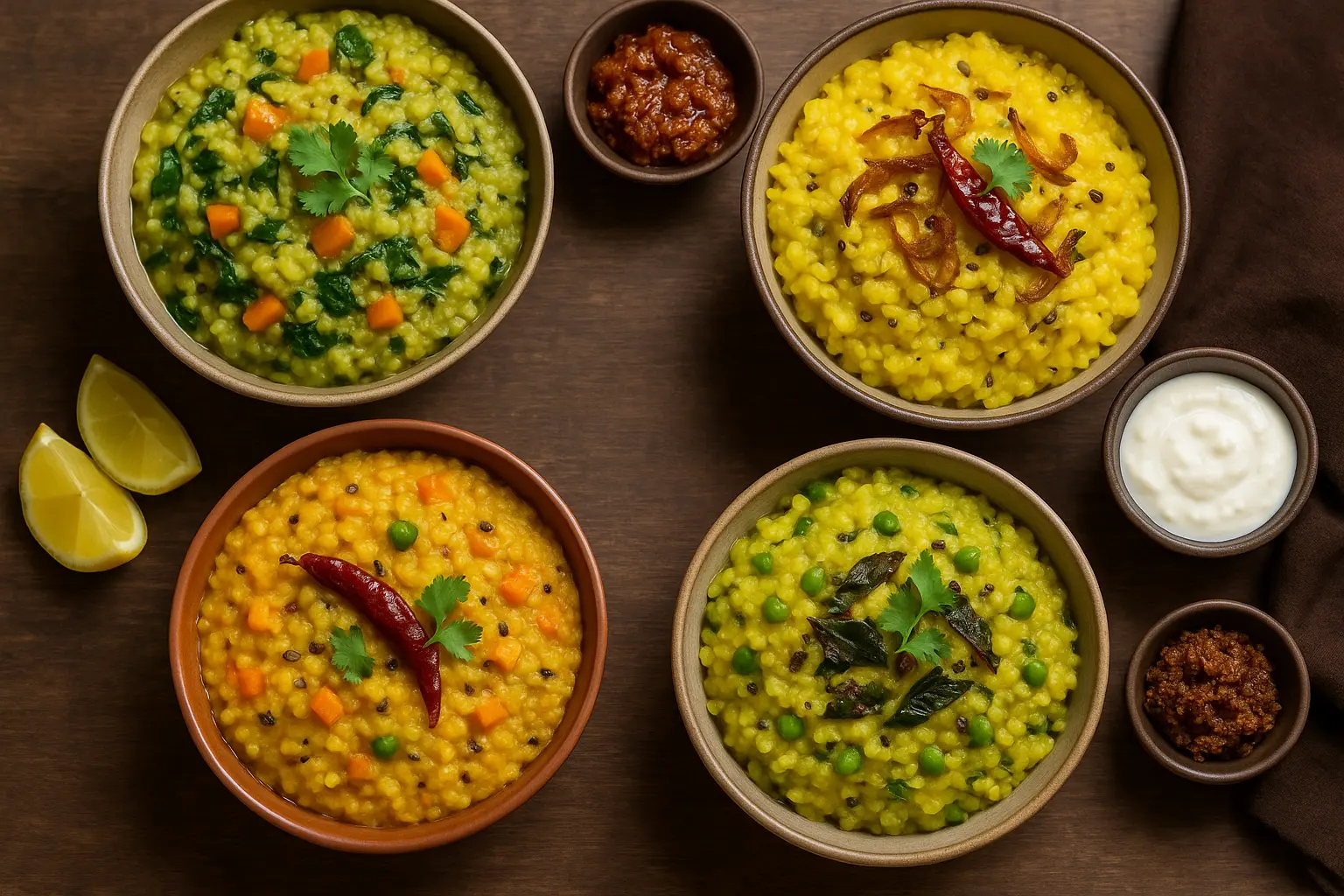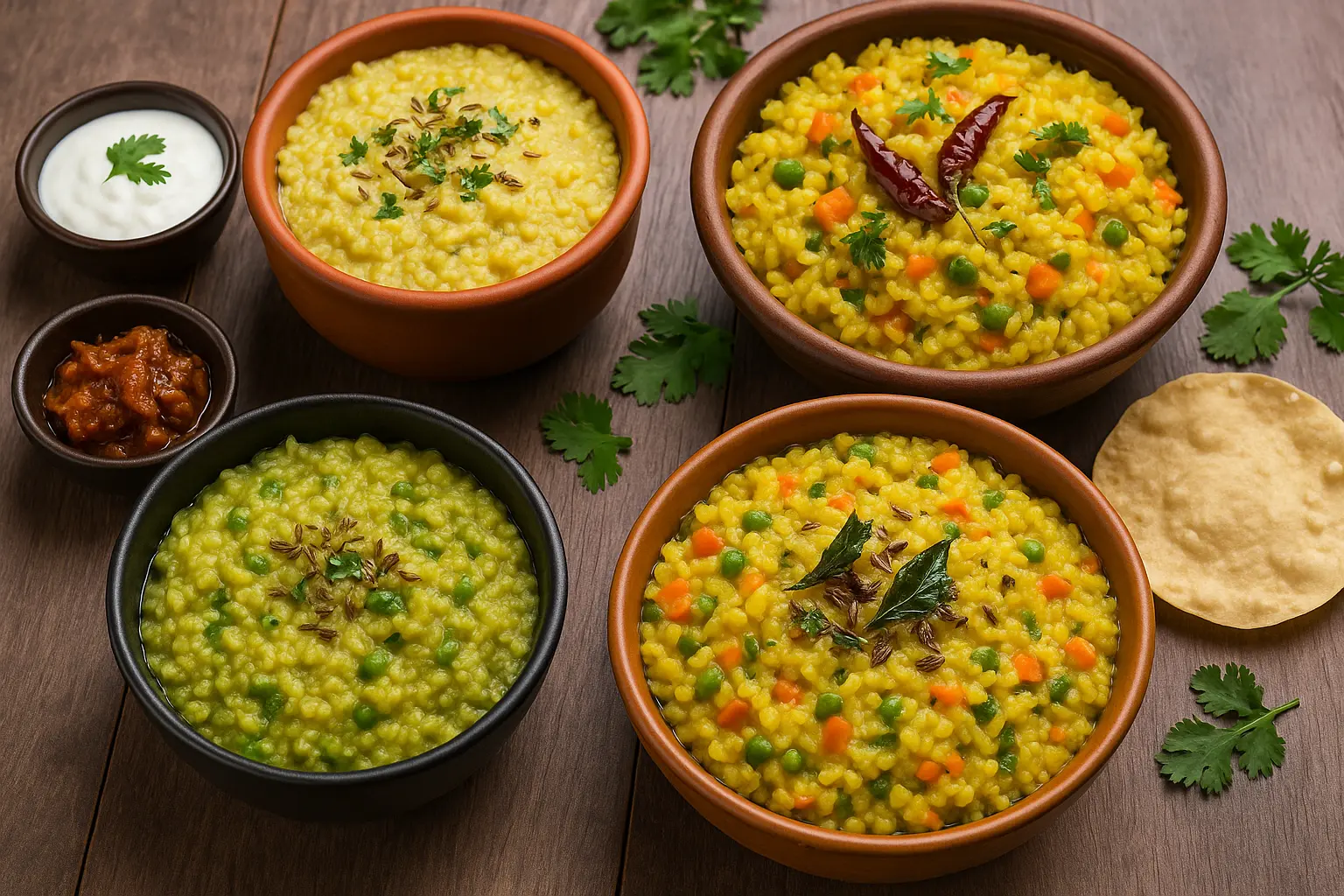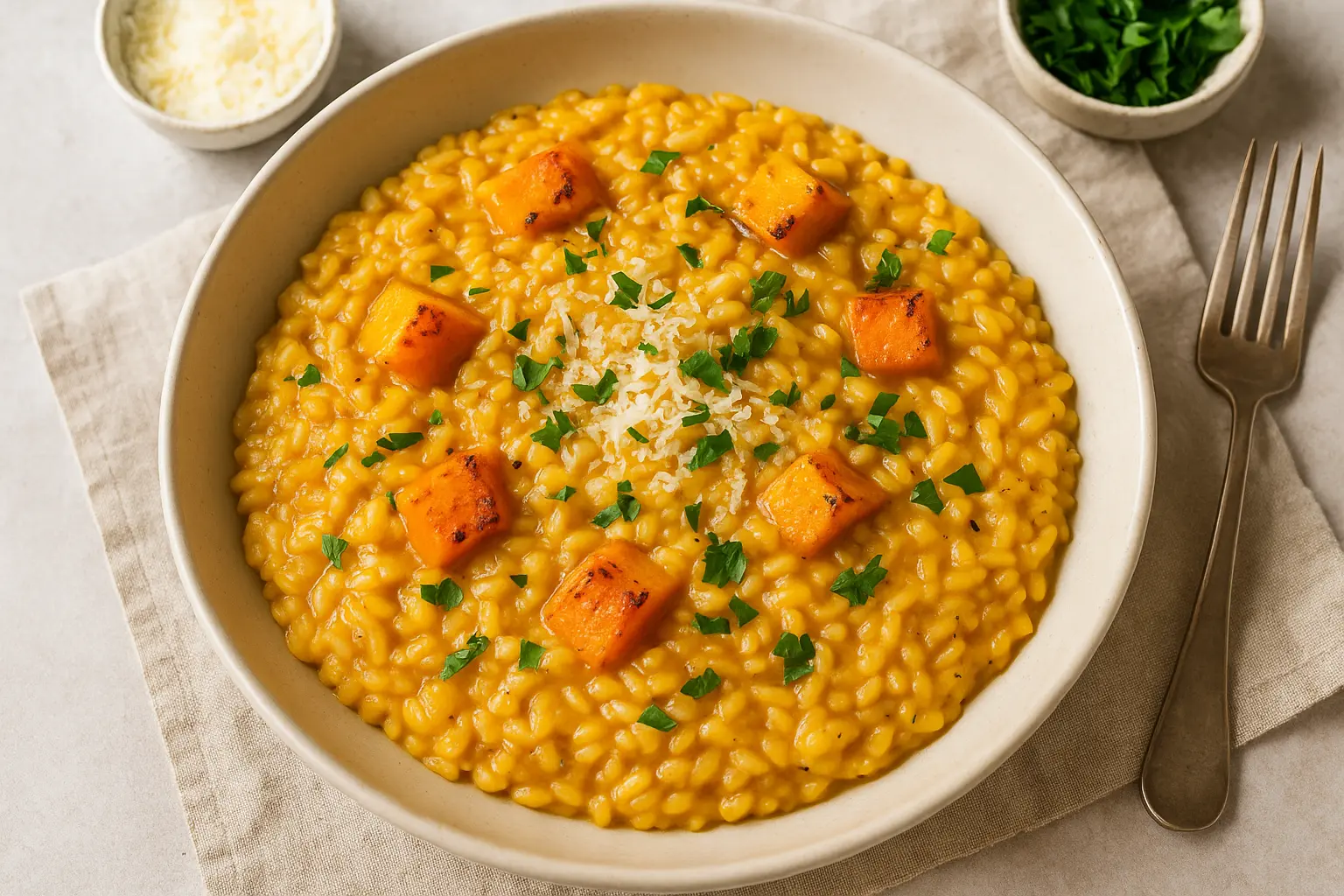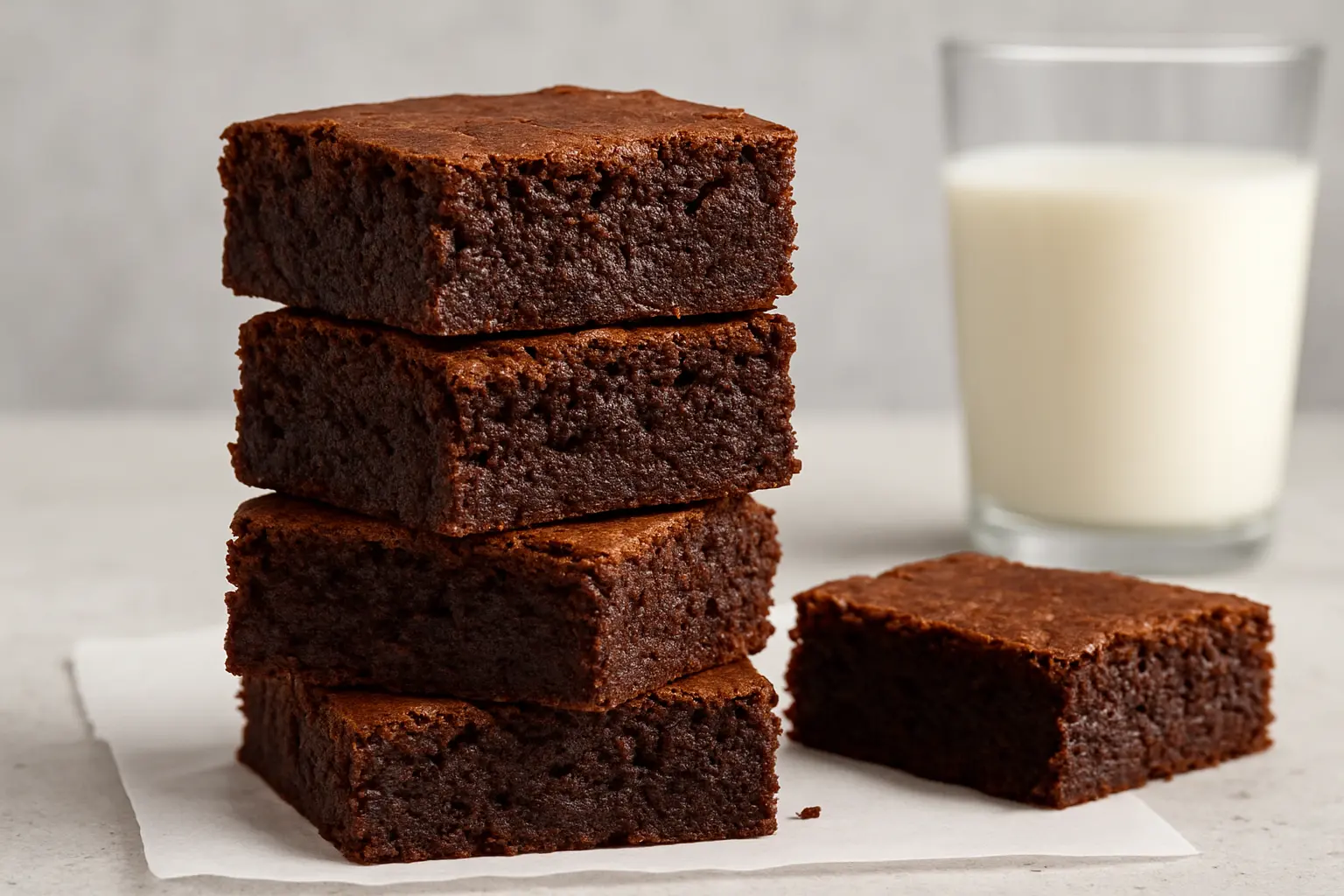Across India, when you say “comfort food,” most people will think of kichdi (also spelled khichdi). It’s a warm, one-pot dish made with rice and lentils, simmered together until soft, and seasoned with mild spices. For centuries, kichdi has been the go-to meal for everything from a sick day to a rainy evening. It’s versatile, wholesome, and deeply comforting.
The beauty of kichdi lies in its simplicity. With just rice, dal (lentils), and basic spices, you get a dish that’s filling, nutritious, and easy on the stomach. But don’t let its humble nature fool you—India offers dozens of variations of kichdi, adapted to seasons, regions, dietary needs, and occasions.

The History and Significance of Kichdi in Indian Cuisine
Kichdi has ancient roots. References to rice and lentil porridge appear in Ayurveda and medieval texts. Some historians believe that kichdi was the base inspiration for the Anglo-Indian dish “kedgeree.”
Across India, kichdi holds cultural importance:
In Ayurveda, it is seen as a cleansing, balancing meal suitable for all body types.
In rituals, simple kichdi is often offered to deities or distributed as prasad.
During festivals, certain regions prepare kichdi with vegetables, ghee, and spices as part of celebratory meals.
For wellness, kichdi is the dish mothers feed their children or family members recovering from illness.
Every household has its own style, influenced by local ingredients and seasonal produce. That’s what makes kichdi endlessly fascinating.
Core Ingredients of Kichdi
Though variations abound, most kichdi recipes revolve around three base components:
Grains
Traditionally: short-grain rice (sona masoori, gobindobhog).
Modern alternatives: quinoa, millet, brown rice.
Lentils (Dal)
Common: moong dal (split yellow lentils), masoor dal (red lentils).
Others: toor dal, chana dal, urad dal (depending on region).
Spices & Seasonings
Basic: turmeric, cumin seeds, asafoetida, salt.
Add-ons: ginger, garlic, curry leaves, whole spices like cloves, cinnamon.
Vegetables (optional)
Seasonal veggies like carrots, beans, peas, pumpkin, spinach.
Fat
Ghee (clarified butter) for authentic richness.
Vegan swaps: sesame oil, coconut oil, avocado oil.
Seasonal Kichdi Variations
1. Summer Kichdi: Light and Cooling
In the hot Indian summer, kichdi is often made with less ghee and mild spices.
Ingredients: Moong dal, rice, cumin, coriander leaves.
Why it works: Easy to digest, cooling effect on the body.
Pro Tip: Add yogurt or raita on the side for a refreshing balance.
2. Monsoon Kichdi: Spiced and Immune-Boosting
The rains bring humidity and risk of infections—so kichdi here is spiced to aid digestion.
Ingredients: Rice, moong dal, ginger, garlic, black pepper, green chilies.
Why it works: Warming spices help fight cold and boost immunity.
Pairing: Papad, pickle, and a drizzle of ghee.
3. Winter Kichdi: Hearty and Warming
Winter calls for rich, vegetable-packed kichdi.
Ingredients: Rice, toor dal, seasonal veggies (carrot, beans, peas), whole spices, generous ghee.
Why it works: Provides warmth and sustenance in cold weather.
Regional Note: In Rajasthan, bajra (pearl millet) replaces rice for winter meals.
4. Spring Kichdi: Fresh and Green
Spring kichdi highlights fresh greens and herbs.
Ingredients: Rice, moong dal, spinach, fenugreek, coriander.
Why it works: Cleansing, light, and packed with vitamins.
Health Angle: Great for detox meals.
Regional Kichdi Specialties
Gujarati Kichdi
Typically plain, served with kadhi (yogurt curry).
Soft, buttery texture with a drizzle of ghee.
Bengali Khichuri
Festive dish often made during Durga Puja.
Includes rice, moong dal (often roasted), potatoes, cauliflower, peas, and whole spices.
Rich, fragrant, and golden with turmeric.
Rajasthani Bajra Kichdi
Uses pearl millet instead of rice.
Hearty, earthy, perfect for winters.
South Indian Pongal (a cousin of kichdi)
Made with rice, moong dal, pepper, curry leaves, and cashews.
Savory (Ven Pongal) or sweet (Sakkarai Pongal).
Maharashtrian Masala Kichdi
Includes onions, tomatoes, green chilies, and goda masala (regional spice blend).
Bihari Kichdi
Simple version with rice, moong dal, and ajwain (carom seeds).
Often served with chokha (mashed spiced veggies).
Modern & Health-Focused Kichdi Variations
Gluten-Free Kichdi
Naturally gluten-free when made with rice and dal.
Use millet or quinoa for extra nutrition.
High-Protein Kichdi
Add moong dal + masoor dal mix.
Toss in paneer cubes, tofu, or soya chunks.
Vegan Kichdi
Replace ghee with coconut oil or olive oil.
Add vegetables for texture.
Weight-Loss Friendly Kichdi
Use brown rice or millet.
Reduce oil and keep spices mild.
One-Pot Instant Pot Kichdi
Perfect for busy days.
Just sauté spices, add rice + dal + veggies, pressure cook, and it’s done.
Tips for Making the Perfect Kichdi
Soak dal and rice for 20–30 minutes to ensure even cooking.
Balance water ratio: Thicker for hearty meals, soupy for light digestion.
Use ghee generously for flavor, but adjust per diet.
Tadka (tempering) at the end lifts the flavor profile—don’t skip it.
Pairings: Yogurt, pickle, papad, or kadhi elevate the meal.
Kichdi for Ayurveda and Wellness
In Ayurveda, kichdi is considered tridoshic—balancing for all three doshas (vata, pitta, kapha). It is often used in detox diets like the “kitchari cleanse.”
For vata: Add more ghee and warming spices.
For pitta: Keep it mild with cooling herbs like coriander.
For kapha: Use less ghee, more spices like ginger and pepper.
Kichdi is also used in baby food and senior diets, because it’s soft, nourishing, and easy to digest.
Pairing Kichdi with Sides
Though kichdi shines on its own, sides complete the comfort food experience:
Kadhi (yogurt curry) – Classic in Gujarat.
Papad & pickle – Crunchy and tangy contrast.
Ghee drizzle – For richness.
Chokha (spiced mashed vegetables) – Popular in Bihar.
Raita or chutney – Lightens the dish.
Festive and Occasion-Based Kichdi
Durga Puja Bhog Khichuri (Bengal) – Paired with labra (mixed veg curry).
Makar Sankranti Pongal (South India) – Sweet and savory versions.
Ekadashi vrat khichdi – Made with sabudana or samo rice, eaten during fasting.
Kichdi adapts beautifully to both everyday comfort and special celebrations.
Conclusion: A Bowl for Every Mood and Season
From the light summer moong dal kichdi to the rich Bengali festival khichuri, this dish has shown its range across India and beyond. It’s more than just rice and lentils—it’s history, tradition, healing, and above all, comfort food for every season.
Whether you are making a quick one-pot meal after work, feeding kids something nourishing, or preparing a festive spread, kichdi belongs on your table.
Leave a comment
Your email address will not be published. Required fields are marked *




















